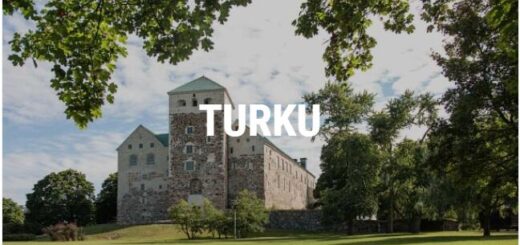Estonia 2018
The population of Estonia in 2018 was estimated to be around 1,328,000 people. The majority of the population is comprised of people of Estonian descent with a smaller percentage of other European ethnicities. The economy is largely reliant on exports, manufacturing and tourism. Foreign relations remain strong with Estonia’s neighbors in the Baltic region as well as other countries in the Americas and Europe. According to extrareference, Estonia has been a parliamentary republic since 1991. In 2018, President Kersti Kaljulaid was re-elected for a second consecutive term after winning 65% of the popular vote in presidential elections held that year.
Yearbook 2018
Estonia. At the beginning of the year, Estonia and Finland presented a joint study that showed that a tunnel can be built between Tallinn and Helsinki by 2040 for a cost equivalent to up to SEK 200 billion. The Gulf of Finland would then have the world’s longest railway tunnel at just over 100 kilometers, and travel time would be reduced to about half an hour from one and a half hours by ferry. Tens of thousands of Estonians commute to Finland for jobs, and 1.7 million Finns visit Tallinn annually.
During the year it was revealed that banks in Estonia have long been used for large-scale money laundering by customers in the Russian Federation and other former Soviet states. The worst hit was Danske Bank’s office in Tallinn, which according to the Financial Times may have washed the equivalent of about SEK 270 billion. Although whistle blowers sounded alarms in 2013, the business has continued. The Estonian Government promised an independent investigation.
- According to Abbreviationfinder: EST is an three letter acronym for Estonia.
In February, an exchange took place at the Russian border, where an Estonian businessman sentenced to prison for espionage in the Russian Federation was exchanged for a Russian convicted of espionage in Estonia. According to Estonian authorities, Russian spy activity has increased in recent years.
According to Countryaah.com, Tallinn is the capital city of Estonia, a country located in Northern Europe. US President Donald Trump’s negative rhetoric against NATO and his positive attitude towards Russian Federation leader Vladimir Putin worried Estonia’s leadership, which saw NATO as the country’s guarantee against any Russian cross-border aggression. The US ambassador to Tallinn, who has come to know the Baltic unrest, left his post in protest of Trump’s treatment of the US allies in NATO and the EU.
Tallinn urged both NATO and the EU to arm the region. President Kersti Kaljulaid said that the EU must increase its resources to defend the Union’s external borders, as Estonia cannot use its own resources on its military defense.
Estonia is one of the few countries that meets NATO’s requirements of at least 2% of its military defense GDP. When Foreign Minister Sven Mikser visited the United States, he said that NATO must increase its efforts in deterrence against the Russian Federation. Mixer stated that the Baltic states were used to threats and hostile propaganda from Moscow, but that this kind of activities increased. He emphasized in particular the importance of identifying misleading information.
Mixer criticized the President of the European Commission when he said that the EU must speak to the Russian Federation on an equal footing. That’s not possible, according to Mikser. The EU’s strength is based on democracy, the rule of law and respect for fundamental rights, while today’s Russian Federation does not share this value base and it limits the relationship the EU can have with the Kremlin, according to the Estonian Foreign Minister. Europe must speak to the Russian Federation with strength, united and based on a stance of principles, Mikser said.
Tensions between Estonia and the Russian Federation increased when the Tallinn government in coordination with the EU in March expelled a Russian military attaché citing the nerve poisoning attack on a Russian former spy and his daughter in British Salisbury. At the same time, a 21-year-old Russian in Estonia was sentenced to four years in prison for spying for the Russian intelligence service FSB.
Later in the year, two men, father and son, were arrested on suspicion of conveying state secrets to the Russian military intelligence service for five years. The son had worked as an officer in the Estonian defense. They are both ethnic Russians with Estonian citizenship. According to the chief of defense, they have caused significant damage to Estonia as well as to its allies in NATO.
The former state-carrying Reform Party had undergone a difficult leadership battle, but in April, EU parliamentarian Kaja Kallas was elected new party leader. She thus became the Opposition’s candidate for the Prime Minister post for the coming years.
Estonia experienced higher economic growth during the year than most EU countries. In the second quarter it was 3.7%, which was also the IMF’s forecast for the whole year. Unemployment was lower than the EU average, 5.3% in July, but was expected to rise somewhat by the end of the year. Unemployment among young people in Estonia was noted at 12.7%.
In the Narva area on the Russian border, where the Russian-speaking population predominates, unemployment was twice as high as the country as a whole. During the year, private investments corresponding to just over SEK 800 million were presented for new jobs in the area. The government also contributed to efforts in border areas, which are considered vulnerable to propaganda by the Russian Federation.
President Kaljulaid considered that Narva had been treated unfairly earlier, and she decided to seek to contribute to a positive image of the city with opportunities to emerge from the post-industrial recession. The president therefore submitted her work to Narva four weeks during the year, where she lived at a local guesthouse and invited locals to receive new foreign ambassadors.



